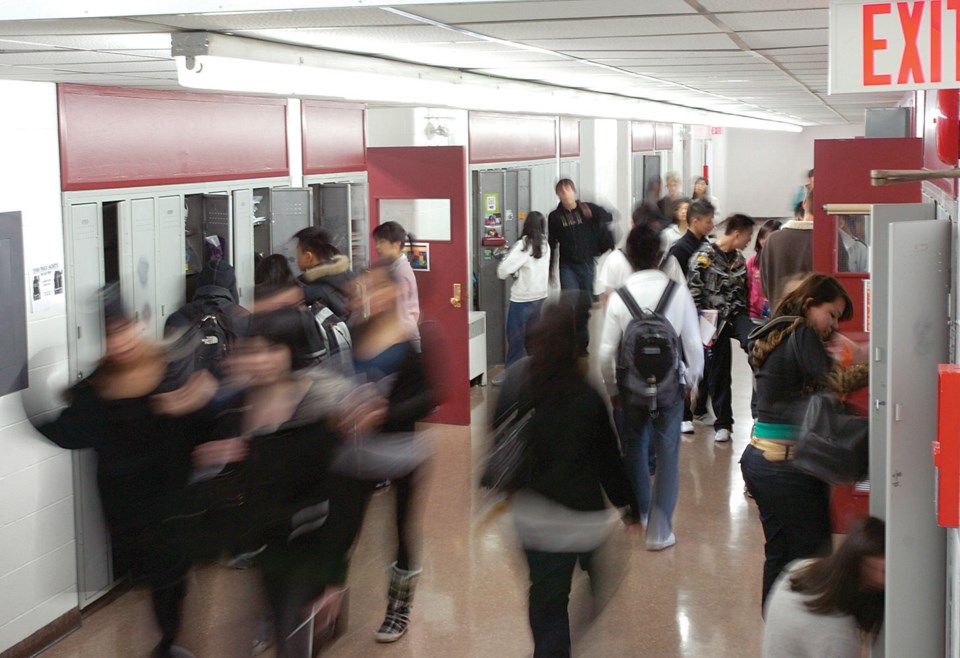Data released by the Ministry of Education reveals more than 16,000 classes across the province serve four or more children with special needs, the B.C. Teachers’ Federation highlighted Wednesday.
That’s an increase of 6,604, or nearly 24 per cent of classes serving four or more children with special needs over the past seven years.
The BCTF says 3,873 classes serve seven or more children with special needs. There are 4,636 classes with seven or more English Language Learners and 1,956 of these are kindergarten to Grade 3 classes.
The BCTF contends 12 years of funding cutbacks by the Ministry of Education mean students aren’t getting the support they need.
BCTF president Jim Iker notes the worsening of class size composition has coincided with cuts to learning specialist teachers who support students in small groups, pull them out of classes and provide individual help.
The BCTF says since 2002, B.C. has lost approximately 700 special education teachers and more than 300 English Language Learner teachers.
Using 2010 data provided by Statistic Canada, the BCTF says B.C. has the worst student-educator ratio in the country and funds education nearly $1,000 less per student than the national average.
Ministry of Education representatives note the government’s Learning Improvement Fund has helped hire more than 500 new teachers and 400 new special education assistants across the province, create smaller class sizes and support professional development and training to help teachers meet complex needs in their classrooms over the last two years. The ministry will provide an additional $210 million over the next three years for school districts through the Learning Improvement Fund.
But Iker said school districts are cutting teachers because they’re not receiving adequate funding from the province, so the Learning Improvement Fund only makes up for a portion of what’s been lost.
Kindergarten classrooms in Vancouver serve an average of 18 students, Grade 1 to 3 classes an average of 21.9, Grade 4 to 7 classes an average of 26.4 and Grade 8 to 12 classes and average of 24.2, as of Oct. 15.
The government and the BCTF return to the bargaining table Jan. 21.
“The issue of class size and composition, of course it’s also an issue at the bargaining table,” Iker said, adding the BCTF hopes to reach an agreement at the table.
When a reporter asked education minister Peter Fassbender in a conference call Wednesday whether the government was committed to hiring more educational assistants or reducing what the union calls complex classes, Fassbender said: “We have significantly invested in special needs and we’ll continue to balance all of these things within the fiscal framework that we have.”
Kits fundraiser
Dr. Gabor Maté will speak about raising teens in the digital age at the Kitsilano secondary parent advisory council’s fundraiser, Jan. 14.
Tickets are $15 in advance at kitsilanopac.ca or $20 at the door. The doors open at 6:45 p.m. and the talk starts at 7:30 in the auditorium at 2550 West 10th Ave. There will be a cash concession and Dr. Maté’s books will be on sale. For more information about the renowned speaker and best-selling author, see drgabormate.com.
crossi@vancourier.com



